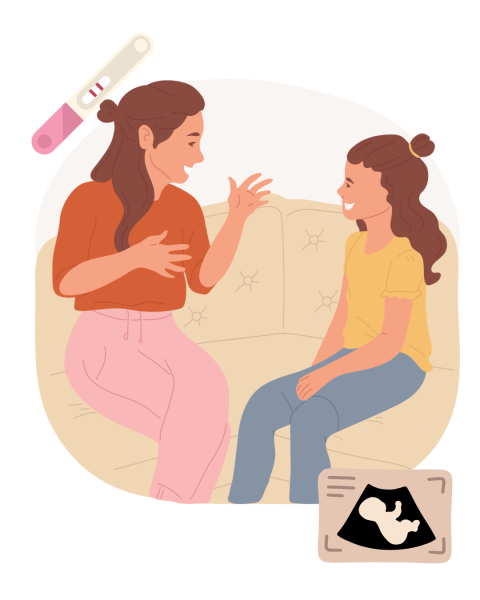
My first Christmas outside of Georgia was in Texas with my millennial-aged cousin, who religiously watched the show “Teen Mom.” Each week, a new episode aired, including the holiday edition, where I discovered girls ages 13-19 becoming mothers with all the drama attached.
As I was in rapt attention from the drama aspect at my respective age of 13, I was also mind blown that this show was really highlighting to me this surge of teen pregnancies.
I wanted to know more naturally, so I did my own research, and let’s just say I was shocked to find the truth about the teen pregnancy spike.
According to the Library of Congress, the National Center for Health Statistics’ earliest estimate of teen birth rates was 54.1 in 1940 then peaked in 1957 at 96.3. Then, from 1992 on, the teen birth rate declined except in 2006 and 2007. From 2007 to 2022, the rate declined by approximately 67% to a historical low of 13.6 in 2022.
I was just as shocked by the concept of teen pregnancies as I was that the biggest spike for them was actually in 1957, not the year 2007 like I once thought.
What is the reason for the 1957 spike, you may ask, and why has it significantly decreased? Well, this was the post-war era, where people were enlightened to celebrate and show true love in all forms.
Two factors helped increase the surge.
“The first is that marriage in the teen years, which was not uncommon in the 1950s, has by now become quite rare,” said Heather D. Boonstra, a writer for Guttmacher Policy Institute. “The second is that this trend has extended to pregnant teens as well: In contrast to the days of the ‘shotgun marriage,’ very few teens who become pregnant nowadays marry before their baby is born”
The cultural shift away from teenage marriages reflects broader societal changes. The post-war era was characterized by an atmosphere of love and freedom, encouraging early parenthood as part of youthful rebellion and romance.
This was also a generation where partnership was at the forefront. Where women craved marriages and becoming homemakers, we now live in a society where individuality takes over
and where women can have more than being a mom as an aspiration. Today’s society emphasizes education, career development and personal aspirations over early marriage and motherhood.
With this notion, I wonder why people are mesmerized by teen mother entertainment. Is it because we live in a society that promotes independent women, free from the pressures of motherhood?
Maybe it is due to the traditional values entitled in teen moms when they have to step up at such a young age. In reality, teenage mothers were a common practice way back when because of young marriages and courtship.
It is because we are conditioned to view a family as dating, to marriage, to then pregnancy that we forget families are unique and created in many different scenarios. This doesn’t make any family more or less valid than the next, and all can be full of love with effort and perseverance.
So, why do people believe that this spike in teen pregnancies is from the 2000s? I believe it is due to the influx of reality TV centered around teen pregnancy and the mothers’ lives.
“Teen pregnancy is fairly common, but reality TV definitely exaggerates a few things,” said Cami Glover, a freshman nursing major. “I knew multiple people in high school who had children, but it was not as huge of a deal as TV makes it.”
Reality TV shows like “Teen Mom” not only dramatize the challenges of young motherhood but often misrepresent the average experiences of teenagers today. These shows paint a sensationalized portrait where drama reigns supreme, diverting attention from the underlying issues of socioeconomic status, access to education and family support systems that genuinely influence teen pregnancy rates.
Additionally, today’s teens are more informed than ever due to comprehensive sex education programs and the availability of contraception. Many schools actively engage students in conversations about healthy relationships and the consequences of early parenthood.
By the time teenagers reach high school, they are often equipped with tools to make informed decisions about their bodies and futures.
The decline in teen birth rates can also be attributed to changing priorities among youth. With increasing opportunities for women in higher education and the workforce, many young people view financial stability and personal growth as prerequisites for starting a family.
They are less likely to see teenage motherhood as a desirable path, recognizing the long-term implications it can have on their lives.
All in all, the perception of teen pregnancy as a modern crisis is not supported by statistical trends. Instead, it is a reflection of how our culture and media amplify certain narratives, leading us to misunderstandings about reality.
Awareness and education are paramount in continuing the trend toward lower teen birth rates. As society evolves, we must aim for a better understanding of the nuances surrounding these issues and step beyond the sensationalized dramatics of reality television to focus on fostering informed and empowered future generations.

